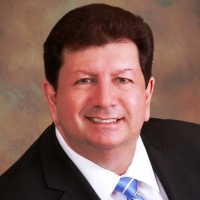
By Edward Beshara
There are several U.S. visa processes for foreign national investors to enter the U.S. Some allow the foreign national investor to enter the U.S. within a matter of a few months and these are the nonimmigrant visa processes.
While foreign national investors can invest in U.S. businesses for EB-5 regional center projects or in U.S. subsidiary companies for U.S. permanent residency, there is a waiting period, usually a minimum of two years.
The main question foreign national investors are asking in 2021, is how can they protect the wealth that they have accumulated in their own country and globally, and how can they minimize their investment in the U.S. to obtain either a temporary U.S. visa or permanent residency status?
The alternative U.S. temporary visa processes include the L-1A intracompany transfer and, the E-2 investor visa process. While the U.S. permanent residency process will include the EB-1C intracompany transfer for executives, managers, or investment in an EB-5 direct or regional center project.
Let’s discuss the diagnosis or comparison of the cost of investing in various U.S. visa processes and concluding that the least expensive process of obtaining U.S. permanent residency will be investing in the EB-5 regional center project.
PROTECTING WEALTH – A PERSPECTIVE
Currently, 2021 and beyond, based upon the pandemic and economic downturns, foreign national investors intend to maintain their wealth in existing assets such as securities or stocks on stock exchanges and/or real estate. Under credible processes, they can borrow funds against these assets whether they are located in the U.S. or their home country. Of course, these borrowed funds can then be invested in U.S. businesses or projects, which form the basis for U.S. visa entry into the U.S.
L-1A NON-IMMIGRANT VISA
There has to be a qualifying relationship between the foreign parent company and its related U.S. subsidiary corporation. The U.S. corporation will petition for the foreign executive to be transferred under the L-1A visa process.
For a new U.S. corporate subsidiary business (less than 1 year), the L-1A visa is issued to the foreign executive for only one year. The L-1A intracompany transfer visa is based upon the fact that the U.S. corporation will have to, within one year, build up enough revenue and high-level executives and managers to allow the U.S. L-1A office to extend the status of executives and managers beyond the first year.
There is a substantial cost for the U.S. corporation to spend on payroll and overhead operating costs to reach a level in the organizational hierarchy to justify the foreign national executive manager to extend their stay as stated beyond the first year.
The L-1A does not require an irrevocable investment prior to visa issuance, however, it will need to show that the U.S. subsidiary is properly “capitalized” usually by the foreign parent company and able to pay employees and operating costs etc.
The L-1A requires executive and managerial employees to be hired quickly within the first year prior to filing the extension. A large cost factor. The L-1A requires an executed lease for the business operations prior to submission. A large cost factor.
That is, a Landlord Tenant Agreement is essential for the L business to have an actual location to operate. For a new L-1A, new physical premises/offices would be required to show there is a place for employees, such as high-level executives and managers.
There is a significant challenge for a new L-1A office renewal (extension of L-1A status) with strict criteria to be applied. It’s recommended to have several employees including executives and managers.
EB-1C: PERMANENT RESIDENCY FOR INTRA COMPANY EXECUTIVES
To obtain U.S. permanent residency from an L-1A there will be additional substantial expenditures by the U.S. corporation which are owned by the foreign national investors or foreign corporations.
That is, the investment either setting up a new L-1A U.S. corporation or buying an existing U.S. corporation subsidiary is substantial, i.e., large amount of investment to be applied to overhead and operating expenses and payroll, especially higher-level executives and managers.
Once the U.S. Subsidiary Corporation has been in existence for more than one year, and after a substantial investment expenditure, then the U.S. Corporation can file an EB-1C petition for the foreign executive or manager to become an immigrant employee. An advantage is the U.S. corporation can petition for more than one executive (and family) e.g., two or three executives.
An alternative is that the foreign parent company can purchase the shares of an existing (more than one year) and substantial (operating) U.S. business (the subsidiary).
COST COMPARISON OF STRATEGIES AND PROCESSING TIMES
L-1A TO EB-1C
|
L-1A (Temporary Visa): To Start |
US$ 150,000 |
|
L-1A U.S. Business: New Office – 12 months |
US$ 1,000,000 |
|
EB1C (permanent Residency) 24 Months |
|
|
Professional Fees: In Total (Attorneys, CPAs) |
US$ 200,000 |
|
Additional Management Operating and Payroll Costs (2 years) |
US $ 1,500,000 |
|
Total 24 Months |
US$ 2,850,000 |
E-2: TREATY INVESTOR NON-IMMIGRANT VISA
For the E-2, the foreign national has to be a citizen of a country that has a treaty investor agreement with the U.S. The initial investment might be a minimum USD $100,000 to USD $150,000, for example in an existing or franchised business. The E-2 investor will have to not only spend money on the purchase but continue to generate enough revenue and invest in the U.S. business to cover overhead and operating costs as well as payroll.
The E-2 only is a temporary visa for a fixed period, as an example, four or five years, with multiple entries. The E-2 visa may be extended with approval from the U.S. consulate or E-2 status extended with approval from the USCIS.
Choosing an E-2 Business, cost is a factor as these are challenges with new and existing offices. The cost of setting up an E-2 business in the first year is substantially less expensive and costly than setting up a new business under the L-1A category.
However, the E-2 investment must be substantial and more than marginal so the executive can earn a financially viable living. For example, if an existing business is for sale at US$100,000, an investment of US$ 95,000 will be considered to be a substantial investment.
For the E-2 renewal, so long as the business is operating and financially viable according to the business plan and employees have been hired, the visa renewal process is straight forward i.e., need tax returns and additional details about ongoing business operations.
EB-5 DIRECT INVESTMENT
The EB-5 category allows a foreign national investor to irrevocably commit their personal funds (e.g., US$ 900,000 if the business is located in a TEA (Target Employment Area) or Rural Area, into a U.S. business that will employ 10 full-time employees. The investor will have to commit their funds initially and then file their EB-5 petition with USCIS to obtain conditional permanent residency.
If the business is not located in a TEA or Rural Area, then the investment is USD $1.8 million.
Investors, if they so choose, can first commit their personal investment funds into an E-2 business, and then invest more funds into the same business i.e., E-2 business to EB-5 business for the U.S. permanent residency visa.
COST COMPARISON OF STRATEGIES AND PROCESSING TIMES
E-2 TO EB-5 (DIRECT)
|
E-2: 4 Months Plus To Start |
Entry to the U.S. US$ 150,000 |
|
E-2 – EB-5: (Direct) |
Entry to the U.S. US$ 900,000 |
|
Application: 24 – 28 months |
|
|
Professional Fees (Attorney, CPA, Business Plan Writer) |
Average US$ 100,000 |
|
Total 32 Months |
US$ 1,150,000 |
|
Additional Management: Payroll and Operating Costs (5 Years) |
US $ 2,000,000 |
|
Total 60 Months |
US$ 3,150,000 |
SECOND CITIZENSHIP: TO BECOME AN E-2 INVESTOR
If the foreign national is not a citizen of an E-2 treaty country, then they will have to buy citizenship in a treaty country, usually for a minimum of USD $300,000. This of course will be an additional cost in obtaining a temporary visa to enter the U.S. and direct a U.S. business.
COST COMPARISON OF STRATEGIES AND PROCESSING TIMES
NEW E-2 (NEW CITIZENSHIP) TO EB-5 (DIRECT: OWN BUSINESS)
|
New E-2 Citizenship of E-2 Country: 5 Months |
US$ 300,000 |
|
E-2: 4 Months To Start |
US$ 150,000 |
|
E-2 to EB-5: Direct |
US$ 900,000 |
|
Application for CPR: 28 Months after filing EB-5 I-526 Petition |
|
|
Professional Fees (Attorney, CPA, Business Plan Writer) |
US$ 150,000 |
|
Additional Management Operating and Payroll Costs (5 Years) |
US $ 2,000,000 |
|
Total 60 Months |
US$ 3,500,000 |
CHOOSING E-2 OR L-1A: BUSINESS COST: A FACTOR: FIRST YEAR
It may be less costly and inexpensive to obtain a citizenship in a treaty country and obtain an E-2 visa other than to spend the capital needed for the setting up of a new L-1A office over the first operational year. Of course, the foreign national investor’s goals will determine whether the E-2 or L-1A is the better approach.
EB-5 REGIONAL CENTER PROJECTS
To invest in an EB-5 regional center project, the amount of investment by the foreign national investor is fixed. Today, based upon the new regulations the minimum investment will be USD $900,000 plus admin fees and attorney’s fee, possibly totaling USD $1,000,000.
In comparison, if the project or business is not in a TEA or Rural Area, then the minimum investment per investor is USD $1.8 million.
COST COMPARISON OF STRATEGIES AND PROCESSING TIMES
EB-5 REGIONAL CENTER PROJECT
|
EB-5 Petition 24 Months |
TEA/RURAL US$ 900,000 |
|
Administration Fee |
US$ 70,000 TO US$ 90,000 |
|
EB-5 Application for CPR: 4 Months |
|
|
Professional Fees (Immigration Attorney, Corporate/Securities Tax) |
US$ 50,000 TO US$ 70,000 |
|
Time: 28 Months Total |
US$ 1,060,000 |
The benefit of investing directly into a viable and credible EB-5 regional center project is that the foreign national investor upfront knows the dollar amount of investment and fees which will be fixed to obtain an approval on the EB-5 petition and conditional permanent residency for themselves and if applicable their family members.
For the Foreign National Investors to protect their wealth, “Predictability and Informed Cost Analysis is Everything”.
DISCLAIMER: The views expressed in this article are solely the views of the author and do not necessarily represent the views of the publisher, its employees. or its affiliates. The information found on this website is intended to be general information; it is not legal or financial advice. Specific legal or financial advice can only be given by a licensed professional with full knowledge of all the facts and circumstances of your particular situation. You should seek consultation with legal, immigration, and financial experts prior to participating in the EB-5 program Posting a question on this website does not create an attorney-client relationship. All questions you post will be available to the public; do not include confidential information in your question.







